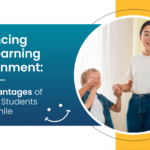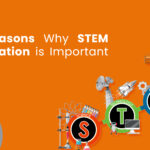
The Crucial Role of Parents Teachers Association in a Child’s Education
Table of Contents:
- Introduction
- Bridging the Gap: Defining the Parents Teachers Association (PTA)
- Beyond the Classroom: Importance of PTM on Academic Success
- Overcoming Challenges: The Resilience of PTA
- Conclusion
Introduction:
The role that parents play in their child’s education is a thread of unmatched importance in the complex fabric of their educational journey. The Parents Teachers Association (PTA) is a powerful and influential entity at the nexus of the home and the school. This collaborative association acts as a link between the protective atmosphere of the family and the regulated world of higher education.
We will examine the vital role that the PTA plays in a child’s educational journey through this blog article, as well as the numerous ways that this relationship supports young minds’ overall development.
Bridging the Gap: Defining the Parents Teachers Association (PTA)
The Parents Teachers Association, or PTA, is a mutually beneficial partnership between educators and parents that works to support the educational environment that fosters a child’s growth. It facilitates candid dialogue, understanding amongst parties, and group decision-making. In addition to its apparent definition, the PTA is a thriving group of people united by a common dedication to the development and achievement of children.
Beyond the Classroom: Importance of PTM on Academic Success
Academic achievement in children is not exclusively decided by what happens in a classroom. Acknowledging this, the PTA enters a larger sphere and adds a multitude of enriching events to classroom learning.
A child’s learning journey is enhanced by the supporting environment that the PTA fosters through the organization of workshops, seminars, and extracurricular activities. Working together, parents and educators create a strong support system that helps students retain what they have learned in school and develop a passion for lifelong learning.
Cultivating a Positive School Environment
The PTA has an impact on every student in the school, influencing it as a whole. Parents that are interested in their children’s education foster a sense of community within the school, which enhances the learning environment. PTA programs help to create a favorable school climate, which in turn affects student motivation, teacher morale, and the school’s overall culture.
A Platform for Open Communication and Understanding
Facilitating communication between parents and teachers serves as one of the PTM’s main goals. Frequent meetings, seminars, and events offer chances for deep conversation. This open line of communication is an essential link that gives teachers a better knowledge of each student’s unique requirements and home environment while also enabling parents to learn more about their child’s academic development.
Holistic Development: Beyond Grades and Exams
PTM engagement spans a child’s entire development and is not limited to academic endeavors. PTAs give students opportunities to explore their interests and abilities through sporting events, cultural events, and art exhibitions. Through the development of critical life skills and the encouragement of self-expression and confidence, this well-rounded approach to education guarantees that kids will thrive both academically and in other areas.
Nurturing Socio-Emotional Well-being
In an era where socio-emotional well-being is recognized as integral to a child’s development, PTAs play a pivotal role. PTAs host talks and workshops on subjects including resilience, mental health, and social skills alongside academic issues. PTAs help to create a caring and supportive environment where kids feel understood, appreciated, and prepared to face the challenges of growing up by proactively addressing these issues.
Addressing Individual Student Needs
Since each child is different, the PTA understands how important it is to meet each child’s requirements. PTAs work together to create chances for parents and teachers to talk about and comprehend the unique needs of each student. This individualized approach guarantees that instructional tactics are customized to meet the demands and various learning styles of the student group.
Overcoming Challenges: The Resilience of PTA
Similar to every other organization effort, the PTA has its share of difficulties. Barriers may include divergent schedules, differing viewpoints, and uneven parental participation. But the PTA’s resiliency comes from its capacity to overcome these obstacles with candid dialogue, adaptability, and a common dedication to the child’s well-being. Addressing challenges demonstrates the PTA’s strength and imparts important life lessons to the young minds who observe this attitude of cooperation.
Conclusion:
The PTA is a harmonious combination of teacher leadership and parental care in the educational symphony of a kid. Its impact extends well beyond the traditional boundaries of education, influencing the very basis that forms a child’s morals, values, and ambitions. As we recognize the vital role played by the Parents Teachers Association, let’s remember it not just as an institution but also as a potent example of the potential that arises when educators and parents come together to share a dedication to the academic success of the next generation.
Also Read: Vital Role of Homework in Child’s Growth: Encouragement Tips
FAQs
Q: What is the Parents Teachers Association (PTA), and why is it important in a child’s education?
A: The PTA is a collaborative organization of parents, teachers, and school staff. Its primary importance lies in fostering a strong partnership between parents and educators, working together to enhance the overall educational experience for children.
Q: How can parents actively participate in the Parents Teachers Association?
A: Parents can actively participate in the PTA by attending meetings, volunteering for school events, joining committees, and contributing their skills and expertise to support various educational initiatives.
Q: What role does the PTA play in school decision-making processes?
A: The PTA often serves as a voice for parents in school decision-making. They provide valuable input on issues such as curriculum development, school policies, and fundraising initiatives, ensuring that the parent community’s perspectives are considered.
Q: How does the PTA contribute to creating a positive school environment?
A: The PTA contributes to a positive school environment by organizing community-building events, promoting open communication between parents and teachers, and supporting initiatives that enhance the overall well-being and learning atmosphere for students.
Q: Can the PTA help address individual student needs or concerns?
A: Yes, the PTA can play a role in addressing individual student needs by fostering a supportive community where parents and teachers can collaborate to identify and address specific challenges or concerns, ensuring that each child’s educational journey is personalized.
Q: What types of programs or events does the PTA typically organize?
A: PTAs often organize a variety of programs and events, including educational workshops, cultural activities, fundraising initiatives, and community outreach programs. These activities aim to enrich the educational experience for students and build a sense of community among parents.
Q: How can the PTA contribute to improving communication between parents and teachers?
A: The PTA facilitates improved communication by organizing regular meetings, maintaining an online presence through newsletters or social media, and providing a platform for parents and teachers to discuss concerns, share information, and collaborate on educational goals.
Q: Is the PTA involved in fundraising, and how are the funds typically utilized?
A: Yes, fundraising is a common aspect of PTA activities. Funds raised are often used to support educational resources, extracurricular activities, school infrastructure improvements, and initiatives that directly benefit the students, creating a more enriched learning environment.
 AIR CONDITIONED
AIR CONDITIONED




